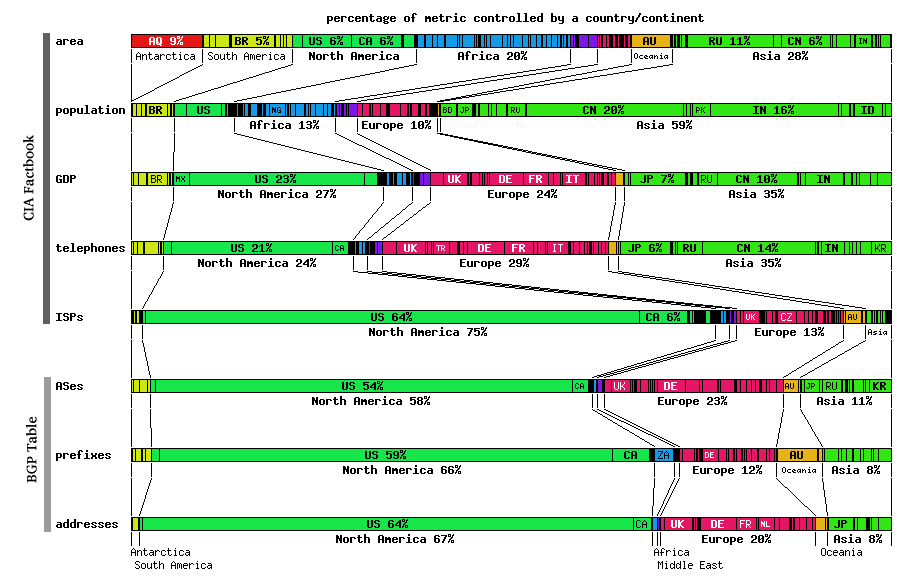location > ANALYSIS : geopolitical : bgp2country
BGP Geopolitical Analysis| The worldwide distribution of Internet resources and address space is highly non- uniform. We present an analysis comparing five demographic measures against three measures of Internet resources, stratified by continent with substratification by country. We found that two continents and one country consume a much larger share of Internet resource allocation than predicted by their demographic measures of size. | |||||||||||
The comparison of demographic parameters to Internet resources required multiple data sources. We gathered demographic data - country area, population, GDP, number of telephone lines, number of Internet Service Providers (ISPs) - from a publically available source, the Central Intelligence Agency's (CIA) World Factbook [Factbook] . We derived the Internet resource data - number of Autonomous Systems (ASes), address prefixes, announced address space - from routing tables acquired from major Internet backbones. The Border Gateway Protocol [BGP] routing tables are provided by the University of Oregon's Route Views project [RouteViews] . We performed the geopolitical mapping of the Internet data using our NetGeo [NetGeo] tool. In order to map Internet addresses to physical locations, we made the assumption that prefixes and addresses reside in or belong to the same country as the AS at the end of the AS path. The paths are taken from the BGP tables of June 11, 2001.  Metrics:
Notes:Code:References:
|
Cooperative Association for Internet Data Analysis (CAIDA)